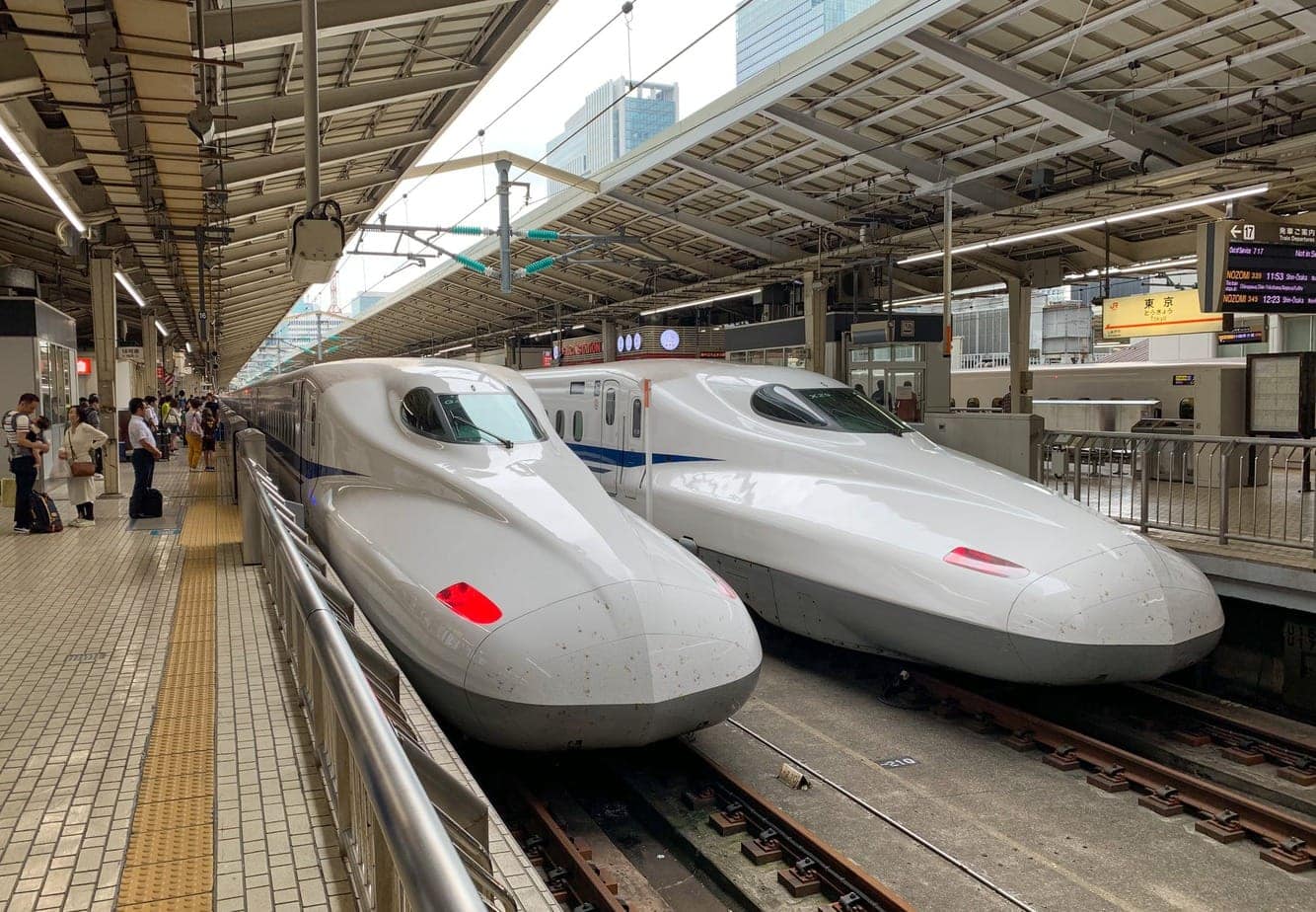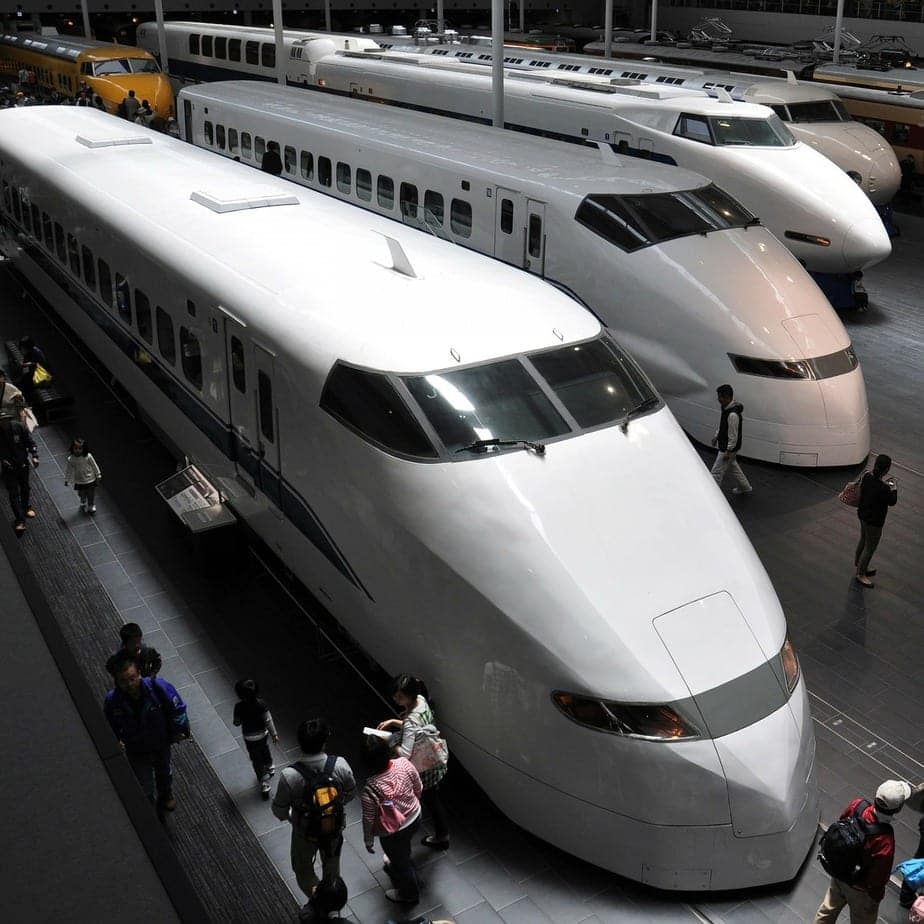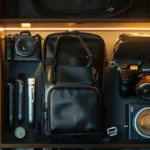Japan – one of the most stunning places on Earth. Its magnificent culture, colorful views and rich history are truly things a person should experience at least once. Meiji Jingu Shrine Sake Barrels are also very bright, colorful, and unique. There are no words to describe Japan’s greatness, so the only way to get in touch with it is to simply see it for yourself. If you are about to plan the trip of your lifetime, you should get acquainted with the railway system of Japan, since you will be riding the train quite often.
Japan is proud of this particular choice of transportation and for good reasons too. The network is extremely well developed, the trains are punctual, clean, very well-built and most importantly, there are so many of them that wherever and whenever you choose to go, there will be a train to take you there. If you want to ride the trains like a local, read our complete guide to rail travel in Japan.
Types of Trains in Japan
1. Shinkansen
Shinkansen, typically known as bullet trains, are the fastest in all of Japan. They run on separate tracks and are scheduled to reach many various destinations. The tickets cost from 800 to 8,000 yen, depending on the destination.
If you want to experience high-speed travel in Japan, choose Shinkansen trains.

2. Limited Express trains
Limited Express trains are the best way to reach the big stations and it only has a limited number of stops. There are over 100 different types of Limited Express trains and their prices can vary from 400 to 4,000 yen.
3. Express trains
This will most likely be your very first ride in the country, since some of the Express trains go to some of the airports, for example Kansai International Airport or Narita International Airport and others. Once again, the price of the ticket depends on the destinations, and it starts at 800 yen. To make sure your landing and the train arrival are on compatible timing, please check trains in Japan.

4. Local trains
Local trains can get you from point A to point B with very many stations in between and yes, it does stop at every single one of them. It is not recommended to choose Local trains for long distances, because they are the slowest ones in Japan. They are also the cheapest, the ticket costs between 130 and 200 yen per ride.
5. Rapid trains
Destinations and ticket fees are basically the same as Local trains, but Rapid trains tend to skip some of the stops between the first and the last, so they are a bit quicker than the Local ones.
6. Special trains
Special trains are specifically designed for tourists. And yes, they are very fun too, they are even called the joyful trains! Mostly they run on weekends and holidays and are only active in the summertime. There are many various destinations prepared to charm the travelers from abroad. It can cost from 500 to 4,000 yen, depending on how far you go.
Train Tickets in Japan
1. The Japan Rail Pass
The Japan Rail Pass is the best one to get if you are in for longer holidays. You can choose between 7, 14 and 21 day passes and it gives you access to all Japan Railways Group trains, ferries and buses all throughout Japan.
2. Standard tickets
Standard tickets give you the ability to travel from one stop to another and can be used for one trip only. They are usually purchased on the train or from the ticket machine that can be found on any platform.
3. City Passes
City Passes grant you free rides on any bus, train, ferry or metro for 24 hours. They are also referred to as One Day Pass and can be bought at any ticket counter in the bigger cities.
Reserving the Train Seats
Yes, you can make sure you get a seat on the train! All you have to do is go to your local ticket box office, specify the details of your travel, give your contact information and you will get confirmation of your reservation in seconds.
People with the Japan Rail Passes are not charged for the reservations. Travelers without the JR pass can also use this convenience, however they will be asked to pay a fee for it. It depends on the selected type of train.
Please keep in mind that trains in Japan are extremely punctual, so if you do reserve a seat, make sure to be there on time!
What to do in a Japanese Railway Station?
How to get on the train on time and not get lost in the process? Not to worry, we have some tips:
- Arrive early, if you can. Knowing you have precious time to sort everything out without having to run for it will put your mind at ease. Not to mention there could be lines and stations could get a bit crowded.
- Follow the Japanese. You will see plenty of locals getting on trains, so after finding your gate, just observe and do the same.
- Check all instructions carefully. Remember – they are written not only in Japanese but also in English and that can make this process a lot easier.
- Double check the number of train tracks on your ticket. There will be direction signs everywhere you go, so follow them attentively.
Japan Rail Pass holders enter platforms from different gates than other travelers, so when you get to the station make sure to find a glass booth where people are required to show the passes if they have them and you will be guided to the respective gates.
 Where to Store Your Luggage?
Where to Store Your Luggage?
Riding the trains with large suitcases is not recommended as there is very little space to put them. Even if the type of train has this particular advantage, for example Shinkansen, it is always a lottery since you never know if the space will be available, or enough for your luggage.
The Japan Railways regulations state the following:
- Each passenger can carry two pieces of large luggage.
- Each suitcase should not exceed 30 kg in total.
- The length, depth and width should add up to 250 cm maximum.
The most comfortable way to travel is to have your luggage brought to your destination by the luggage forwarding systems. Many airports have Takuhaibin luggage forwarding counters where you can leave your luggage without any prior reservation and have it delivered at your desired destination. Make sure to check if your airport offers this service and if it does, be ready to pay from 1,500 to 3,000 yen.
Overall, try to be mindful and friendly to other passengers, attentive in both railway station and the train and you will have an amazing time in Japan. Endless possible destinations and comfortable rides will make your trip a lot easier, so read over this guide one more time before the arrival and have a fun, safe trip!



